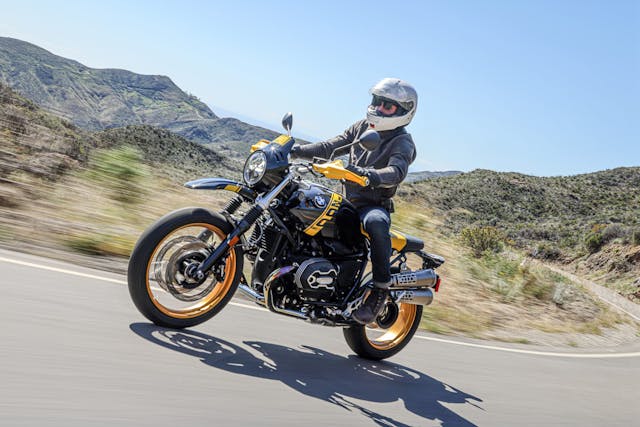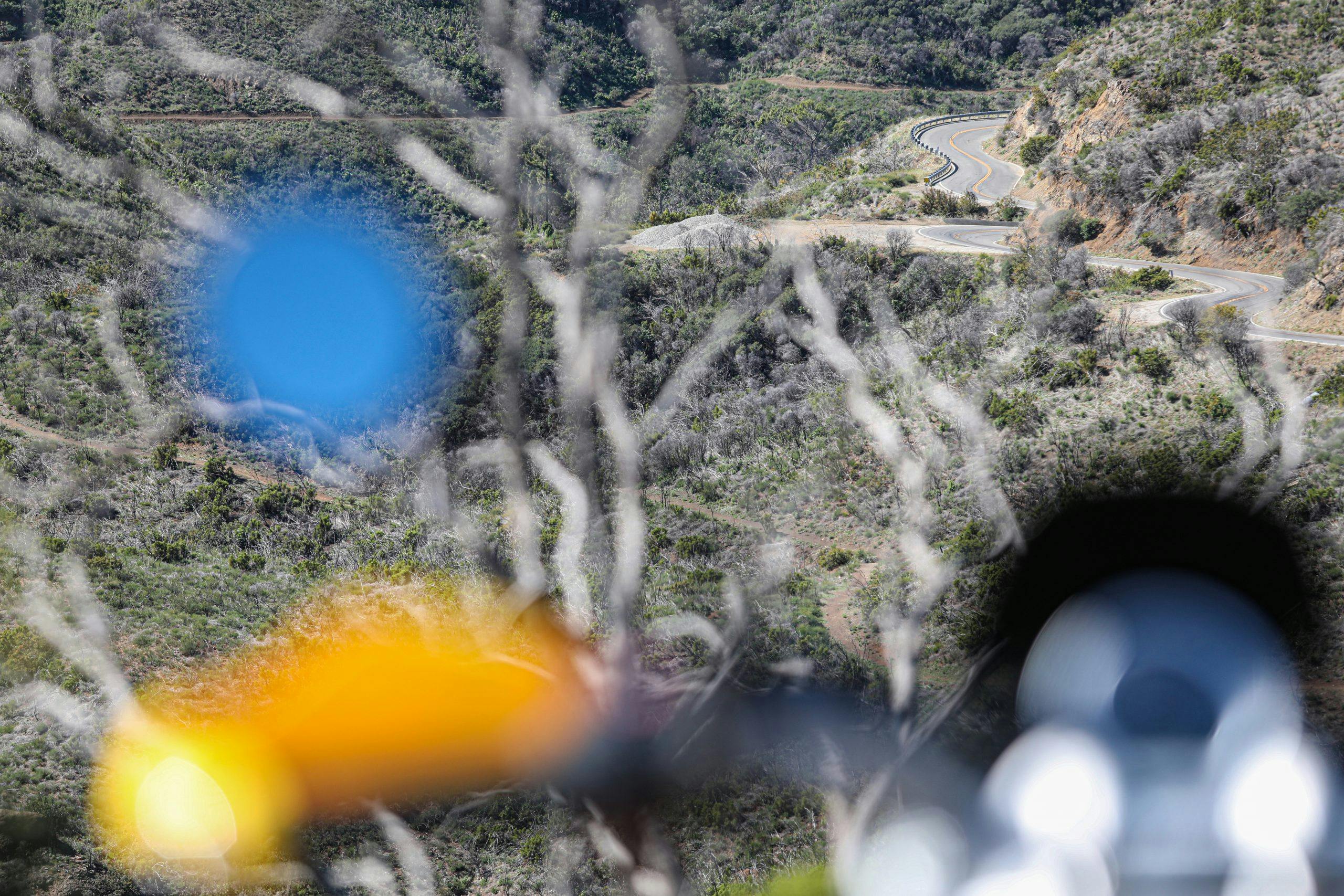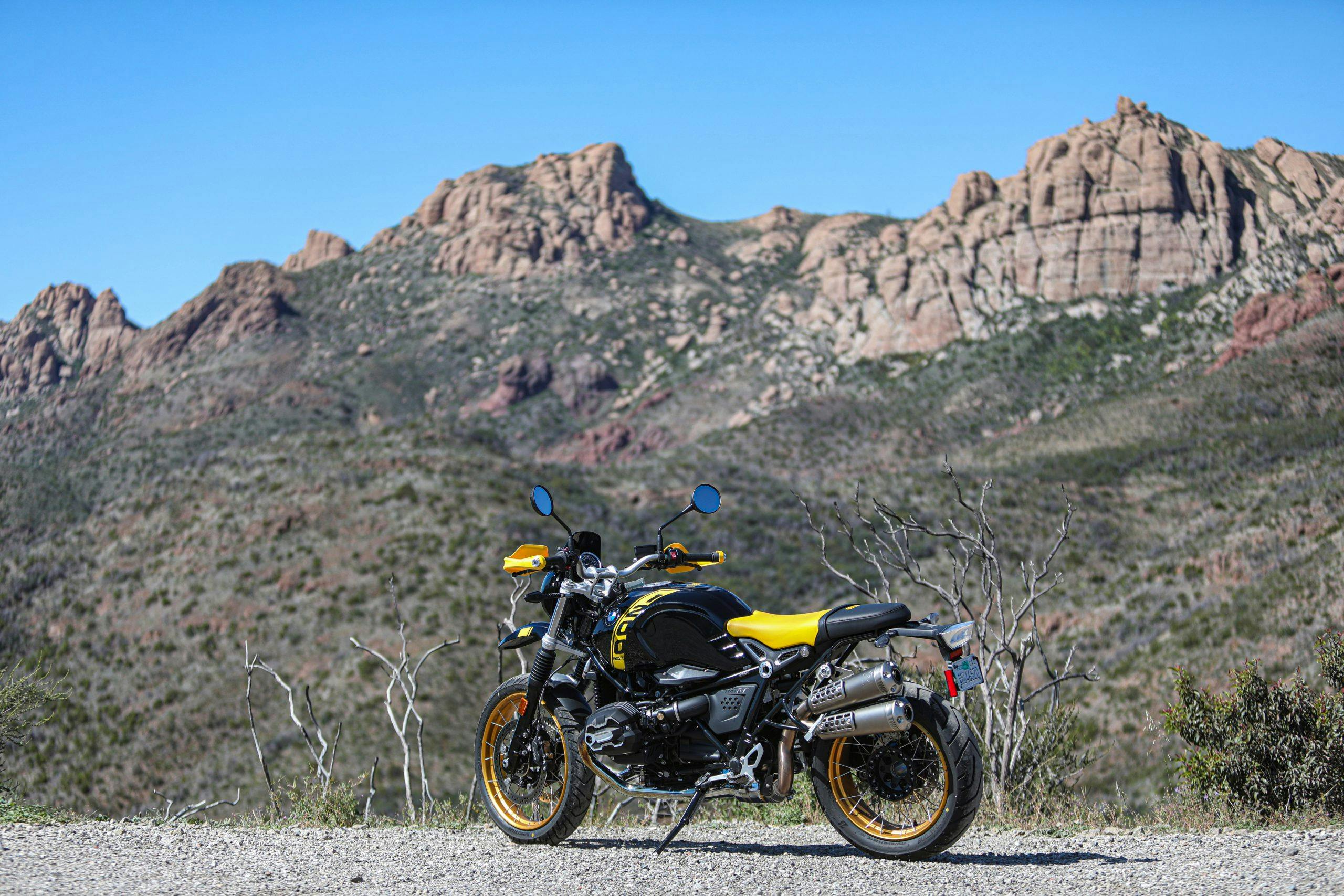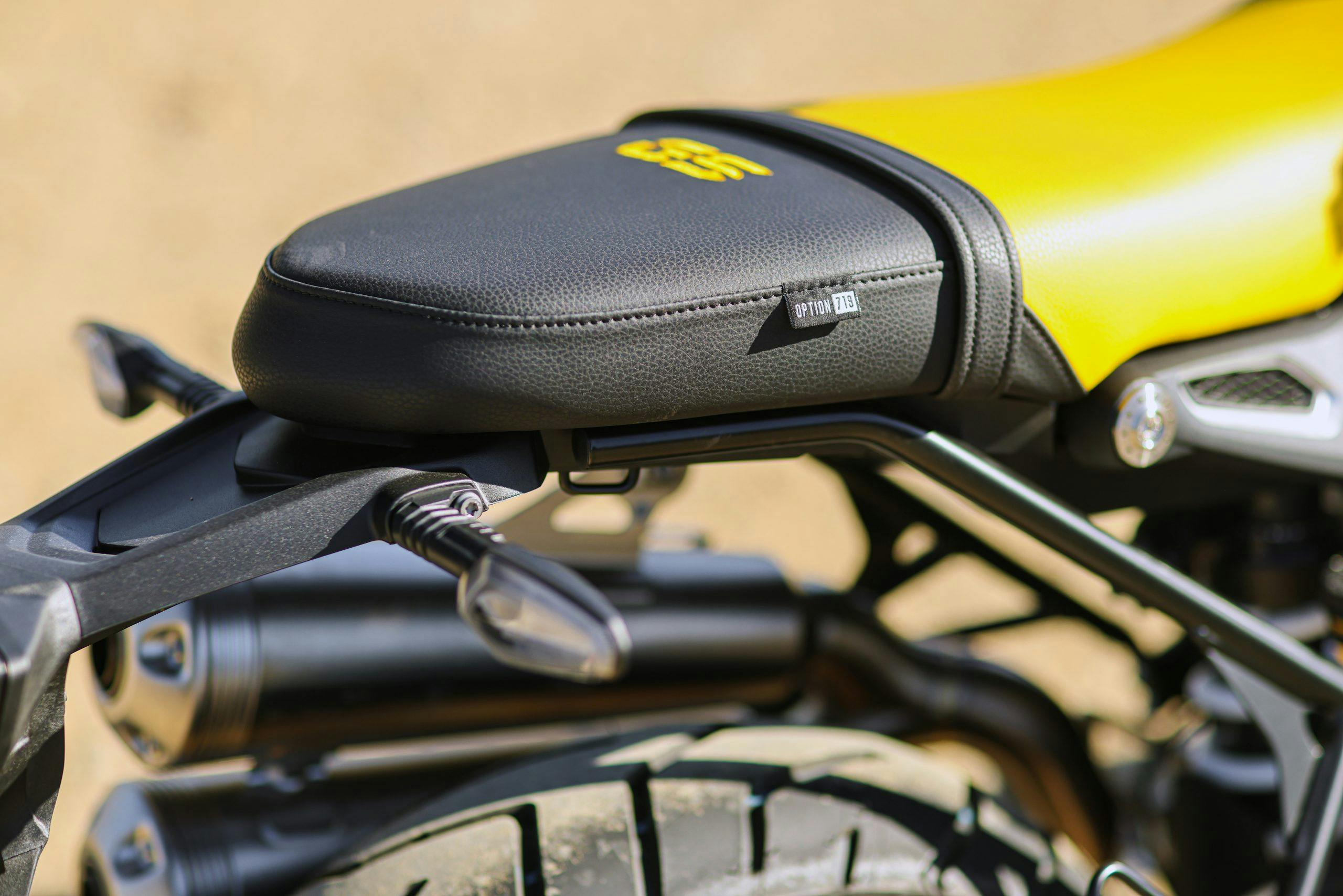Review: 2021 BMW R nineT Urban GS 40th Anniversary
There are two kinds of motorcycles: those where you fall in love immediately and later regret the feeling, and those where you slowly get to know the bike and long for it more with each passing day. The BMW R nineT Urban GS 40th Anniversary slots somewhere in the middle. If you’ve got the patience to warm up to it, it might become your favorite.
To understand the words “Urban GS,” we need to go back 40 years. A few people in Germany in the late 1970s had the crazy idea to assemble a motorcycle that could work for long-distance touring and off-road. “Ze people like ze adventure!” they said. From that came the first BMW G/S, the 1980–1987 R80 G/S. The letters stood for Gelände/Straße, or “off-road/road.” And my God, was that a good business choice. We can credit that bike with not only saving BMW Motorrad—the carmaker’s motorcycle division, then struggling—but also with winning the 1981 Paris-Dakar off-road race and birthing the now-booming adventure-bike segment.
Bravo. Next came the redesigned 1987 R80 GS and R100 GS (slash between the letters now omitted), and after that, the 1997 R1100 GS. The R1100 brought the styling language used on the “modern” GS: Picture big side luggage, unique Telelever front suspension, a front fender shaped like a bird’s beak, and looks best described as, “I’m not sure if this is pretty—what do you think?”
BMW’s lineup currently holds five GS models, from the small G310 GS to the hunky R1250 GS Adventure. The latter comes in at nearly 600 pounds wet, 50 pounds of that as fuel.
Alas, times have changed. Somewhere along the line, “Ze people like ze adventure!” became “Ze people like ze pavement!” Over the last 40 years, the GS range has skewed more toward on-road comfort. Now we have the confusingly named but brilliant R nineT Urban GS 40th Anniversary, aimed mostly at pavement. Where nostalgia meets a well-executed plan. Clocking in at $15,995, this odd-looking machine might not be immediately captivating, but it’s worth a ride before you decide.
Marketplace
Buy and sell classics with confidence
When the R nineT was launched in 2014, BMW pitched the bike as a base for customizers. At the time, the company hoped to capitalize on the mass-market appeal of the retro-modern styling then driving new-motorcycle sales. (Ducati announced its successful Scrambler range at the same time, and for the same reason.) The R nineT quickly spawned a slew of variants, from cafe racers to scramblers, and the Urban GS joined the lineup in 2017. For 2021, all R nineTs received an array of updates: redesigned engine components for Euro 5 compliance, LED lighting, a new rear shock, road and rain ride modes, an optional dirt mode, cornering ABS, adjustable engine braking, a standard USB port, and minor cosmetic changes. The 40th anniversary model is, of course, unique to 2021.
Your first question will be whether the anniversary model’s “bumblebee” paint scheme is cool to you, or just to your BMW club, or to all your friends, or to nobody. When our test bike was delivered, Hagerty’s motorcycle-media staff stood around and pondered the question. There were comments like, “I like the gold wheels,” yet no one that was brave enough to speak up and call the thing good-looking. The yellow hand guards look almost identical to the ones on sale for $15 at your local dirt-bike shop. (BMW’s website says, “the yellow hand protector proves the attention to detail.” No kidding—parts-bin detail.)
Polarizing lines aside, there is history here. The R100 GS featured a similar paint scheme in the late Eighties and early Nineties. The 1170-cc, air-and-oil-cooled mill hanging from the nineT’s steel trellis frame is also nothing new. This engine was used in the previous R1200 GS and retired there in 2013, just as its life in the nineT began. The R1200’s replacement, the R1250, features water cooling, but the older motor offers a more vintage look and a more mechanical feel. Perfect for a retro bike meant to stir emotions. This is where my love affair begins.
If you haven’t ridden a boxer twin, it is an experience. These engines don’t whir or start slowly, as an inline-four might. They pop to life. The bike torques to the left as one of those 585-cc jugs hits top dead center. The Akrapovic exhaust barks a quick surprise. You smile a bit. The machine rocks a little between your legs.
Riding here is effortless when you want and engaged when you don’t. If many bikes ask you to be focused and involved, the BMW lets you go at your own pace and enjoy every moment. The twin’s torque means you don’t feel the need to change gear at every turn. This is important if you’re looking for a bike to truly enjoy and spend time on—for those times when you almost say, “I could just take the car,” then choose the bike instead.
The controls line up as one would expect. At six-foot-one, I didn’t feel cramped in arms or legs. The Urban GS gets a 19-inch front wheel and 1.7-degree shallower rake versus the standard R nineT’s 17-incher and steeper fork. This adds a more wallowy feel and slower turn-in, at least on dry pavement. Once again, don’t kid yourself and think you’ll be racing off-road or begging for a track day—this is a capable machine, but it’s not a sport bike. Think of a Swiss Army knife: It began life as an item of pure function, then eventually became a fashion accessory.
As useful as it is, the Urban GS comes with a few issues. First: the classic BMW gearbox clunk that every GS has had for years, that BMW says is normal despite the two million forum posts from owners asking why their gearbox is broken? It’s gone, replaced by a vast cavern in the transmission, below first gear on the shifter. My typical check for being in first gear is to tap down on the shift lever—if it’s solid, I’m in first. Simple. In first gear, the R nineT transmission instead feels as though it’s in a false neutral. In neutral and ready to go to first? It’s impossible to do that without letting the clutch out to spin the transmission first. A nuisance.
Second complaint: When the nineT was launched in 2014, basic analog dashes and simple controls were fine. Riders now expect more: TFT dashes and full electronic chassis aids are all but standard, and found on bikes far less expensive. (The similar Triumph 1200XC, for example, comes with a TFT dash, six ride modes, and keyless ignition, all for less cost than the BMW.) On top of that, the Urban GS offers a more basic dash than even the original, 2014-model nineT. You get a single analog gauge with a single-line digital readout for mileage and auxiliary information, nothing else.
So what is this bike, really? Gelände/Straße plus urban, so… urban off-road road? Weirdly, it all works, an unexpected balance. Any concerns disappear when nostalgia comes together with a well-executed plan. Forty years after BMW had an unexpected sales success with the original G/S, the R nineT represents another unexpected win. The Urban GS version is a nice nod to history, even if it does sear your eyeballs.





























































